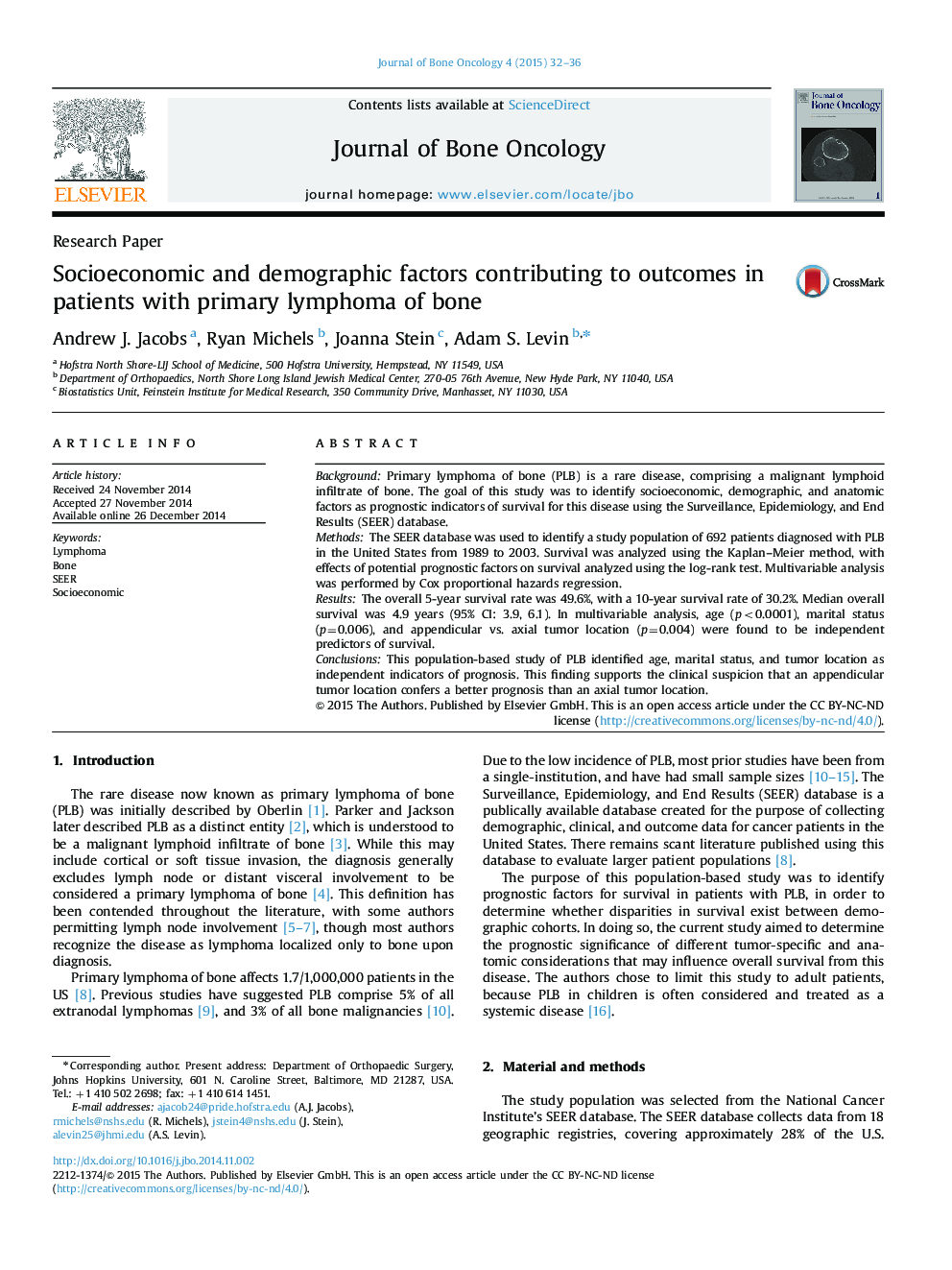| کد مقاله | کد نشریه | سال انتشار | مقاله انگلیسی | نسخه تمام متن |
|---|---|---|---|---|
| 2136109 | 1087766 | 2015 | 5 صفحه PDF | دانلود رایگان |
BackgroundPrimary lymphoma of bone (PLB) is a rare disease, comprising a malignant lymphoid infiltrate of bone. The goal of this study was to identify socioeconomic, demographic, and anatomic factors as prognostic indicators of survival for this disease using the Surveillance, Epidemiology, and End Results (SEER) database.MethodsThe SEER database was used to identify a study population of 692 patients diagnosed with PLB in the United States from 1989 to 2003. Survival was analyzed using the Kaplan–Meier method, with effects of potential prognostic factors on survival analyzed using the log-rank test. Multivariable analysis was performed by Cox proportional hazards regression.ResultsThe overall 5-year survival rate was 49.6%, with a 10-year survival rate of 30.2%. Median overall survival was 4.9 years (95% CI: 3.9, 6.1). In multivariable analysis, age (p<0.0001), marital status (p=0.006), and appendicular vs. axial tumor location (p=0.004) were found to be independent predictors of survival.ConclusionsThis population-based study of PLB identified age, marital status, and tumor location as independent indicators of prognosis. This finding supports the clinical suspicion that an appendicular tumor location confers a better prognosis than an axial tumor location.
Journal: Journal of Bone Oncology - Volume 4, Issue 1, March 2015, Pages 32–36
